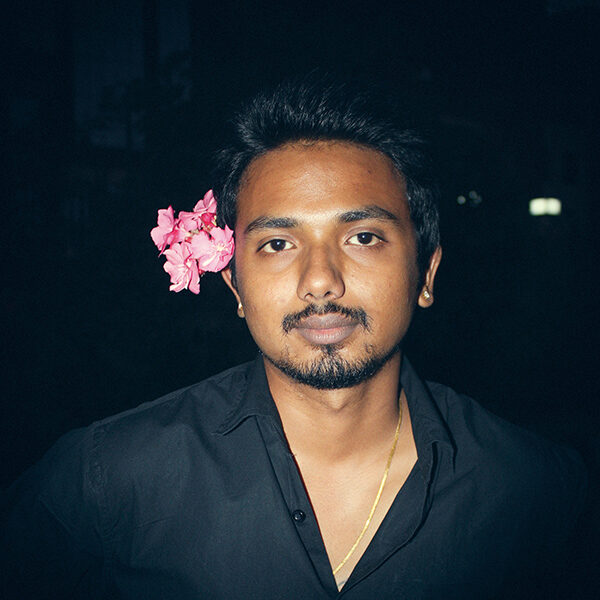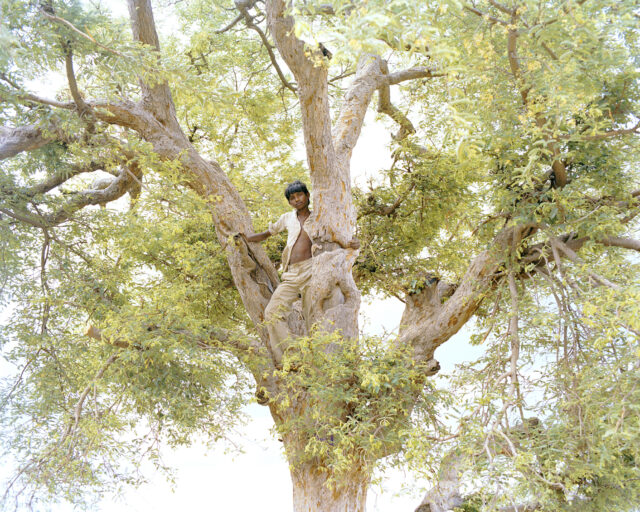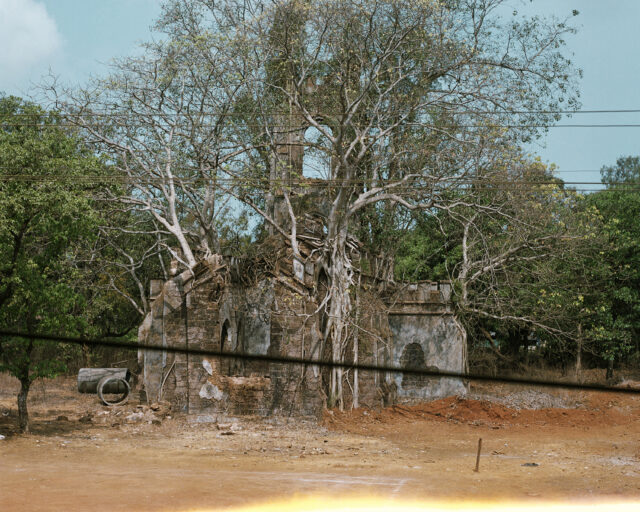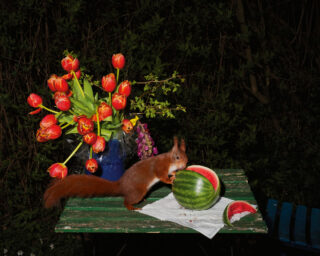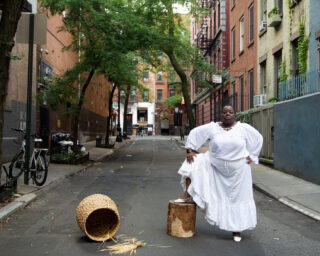Anoop Ray, Untitled, October 2011, from the series Friends and Their Friends, 2010–15
Courtesy the artist
Founded in 1983, Houston’s FotoFest has since offered global takes on contemporary and historical photography. Its globetrotting founders, Wendy Watriss and Frederick Baldwin loosely modeled the festival on the Rencontres d’Arles, the venerable, rosé-soaked photography festival and “meeting place” held annually in the idylls of southern France. By contrast, FotoFest set up shop in energy-rich, zoning-free Houston (the only French here might be the concept of laissez-faire) and established itself by taking deep dives into capacious themes: a recent edition took on the environment, while past iterations have delved into the photographic cultures of particular geographies—such as Latin America, Russia, and the Middle East and North Africa—to highlight image makers unknown in the United States.
This year’s edition, curated by photographer Sunil Gupta alongside Steven Evans, the festival’s current executive director, takes an expansive look at recent photography from India and its diasporic communities. The festival, titled India: Contemporary Photographic and New Media Art, features forty-seven artists and is staged across multiple venues throughout the sprawling city, which is home to a number of top-flight arts institutions (notably the Menil Collection and the Museum of Fine Arts, Houston, which is concurrently staging a Raghubir Singh retrospective). One standout venue is a monumental converted rice packaging facility, recently converted to artist studios, with soaring eighty-three-foot-tall silos that bear the word “Success” in colossal lettering. Another group exhibition is installed at the elegant Asia Society Texas Center, designed by architect Yoshio Taniguchi.
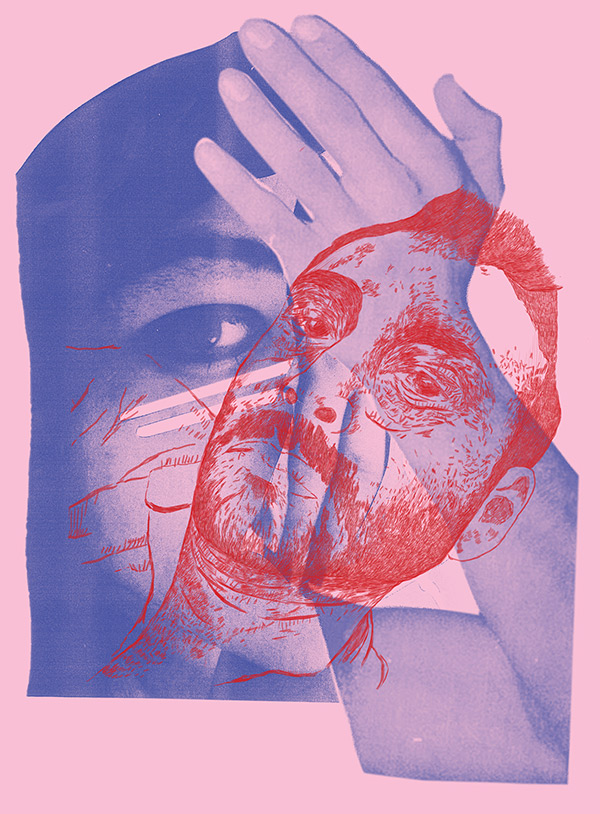
Courtesy the artist
While some artists might resist having their worked framed by geography, curator Sunil Gupta, in his catalogue essay, lays out the open-ended motivating questions that underpin his selection of works: “How do contemporary photographers and artists of Indian origin imagine the diverse and complicated subjectivities of Indian-ness regardless of where they live? How do they talk back to photographic history that has remained Eurocentric for over a century and a half? How do they absorb the legacy of colonial anthropological photography where the photographs depict their own ancestors?” Gupta also questions what it means to speak of Indian photo history versus global photo history. Is there a need for separate regional histories? Or do global histories—usually written from a blinkered Western vantage—need to do more work to recognize that other histories of photography exist? Both, of course, are necessary. Also challenging for the country’s contemporary photographic culture, Gupta notes, is the dearth of institutions teaching photography, building archives, and creating a critical framework for thinking about pictures.
Even so, through a range of photographic styles and media (all work is made post-2000), the featured photographers delve into a host of ideas—legacies of colonialism, gender politics, identity performance, the caste system, environmental degradation, ethnic violence, growing inequality, and life in the diaspora—and make clear that representations of India, the second most populous country in the world, must reflect the immense diversity and complexity of the place itself.

Courtesy the artist
Rishi Singhal
For more than a decade, Rishi Singhal has photographed along the Ganga (Ganges) River. His aim has been to capture life in the communities along the banks of the river. Framed by sublime views of the majestic Himalayan mountains and the Bay of Bengal, his images capture the tension between human settlements and the natural world.

Pushpamala N.
Among the most internationally recognized artists on view is Pushpamala N. Her project The Harcourt Set (2009) was commissioned for a show at the Centre Pompidou, Paris. For this work, the artist collaborated with the famous Studio Harcourt—known for its polished photographs of film stars—to recreate iconic images from nineteenth-century France.

Courtesy the artist
Tenzing Dakpa
Tenzing Dakpa’s series The Hotel, shot in high-contrast black and white, is based on his family’s own hotel and his hometown of Gangtok, Sikkim. Playing on themes of cultural displacement—Dakpa is a second-generation Tibetan who moved to New Delhi and then to the United States, where he studied at the Rhode Island School of Design—he enacts an oblique narrative of his family as they move through the daily motions of hotel upkeep, performing memories of what the artist describes as a “temporal existence introducedby migration.”

Courtesy the artist
Sandip Kuriakose
Kuriakose’s work takes on photography as it operates in digital space, delving into the language of images posted to gay dating sites, which become both a means of communication and a performance of identity.

Courtesy the artist
Vidisha Saini
A highlight of the festival is Vidisha Saini’s installation of inkjet prints on newspaper, which have the subtle palette of watercolor. The project, You Like Mr. Shekhar, hones in on the story of Hampi, a village in the state of Karnataka. Once the capital of the largest Hindu Empire, the village eventually became abandoned, before becoming a UNESCO World Heritage Site in the 1980s. More recently, families living there have been relocated from the location to conserve the architecture. Saini’s installation—with vitrines of castaway objects, presumably from the families who have left—amounts to a form of archaeology on the part of the artist.
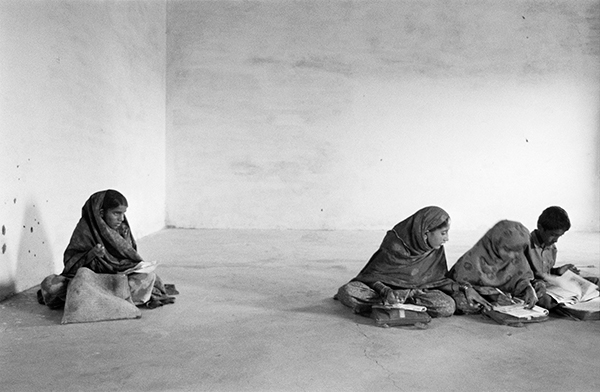
Courtesy the artist
Gauri Gill
Gauri Gill is celebrated for her 2012 photobook, BalikaMela, composed of deceptively simple yet poignant portraits of young girls at a fair in Rajasthan, Western India. At FotoFest, Gill’s series of forty-four gelatin-silver prints, installed sequentially in cinematic storyboard fashion, focus on the daily life of a young girl living in a Muslim settlement in a stark desert environment.
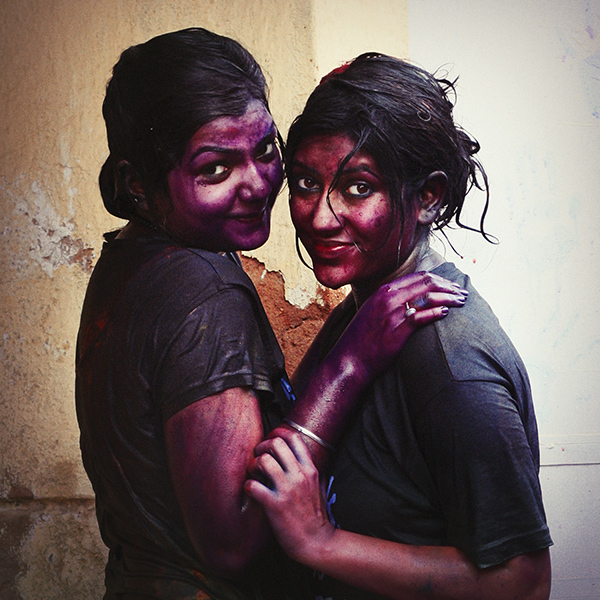
Courtesy the Artist
Anoop Ray
Anoop Ray adds to photography’s longstanding diaristic tradition of dissolving barriers and turning the camera on those in one’s immediate circle—in this case, the intimate moments of his friend group.

Courtesy the artist, Pier 24, San Francisco, and Postcards from America
Sohrab Hura
Sohrab Hura, who is based in New Delhi, traveled throughout the American South to make this body of work. He was originally motivated by images his father had made in the region, earlier on, when he had been employed as a sailor on a commercial ship. Hura plays with the idea of being an outsider, wandering a geography that is haunted by history and local stereotypes that he encountered on the other side of the world.
India: Contemporary Photography and New Media Art is on view in Houston, Texas, through April 22, 2018. Modernism on the Ganges: Raghubir Singh Photographs is on view at the Museum of Fine Arts, Houston, through June 3, 2018.










